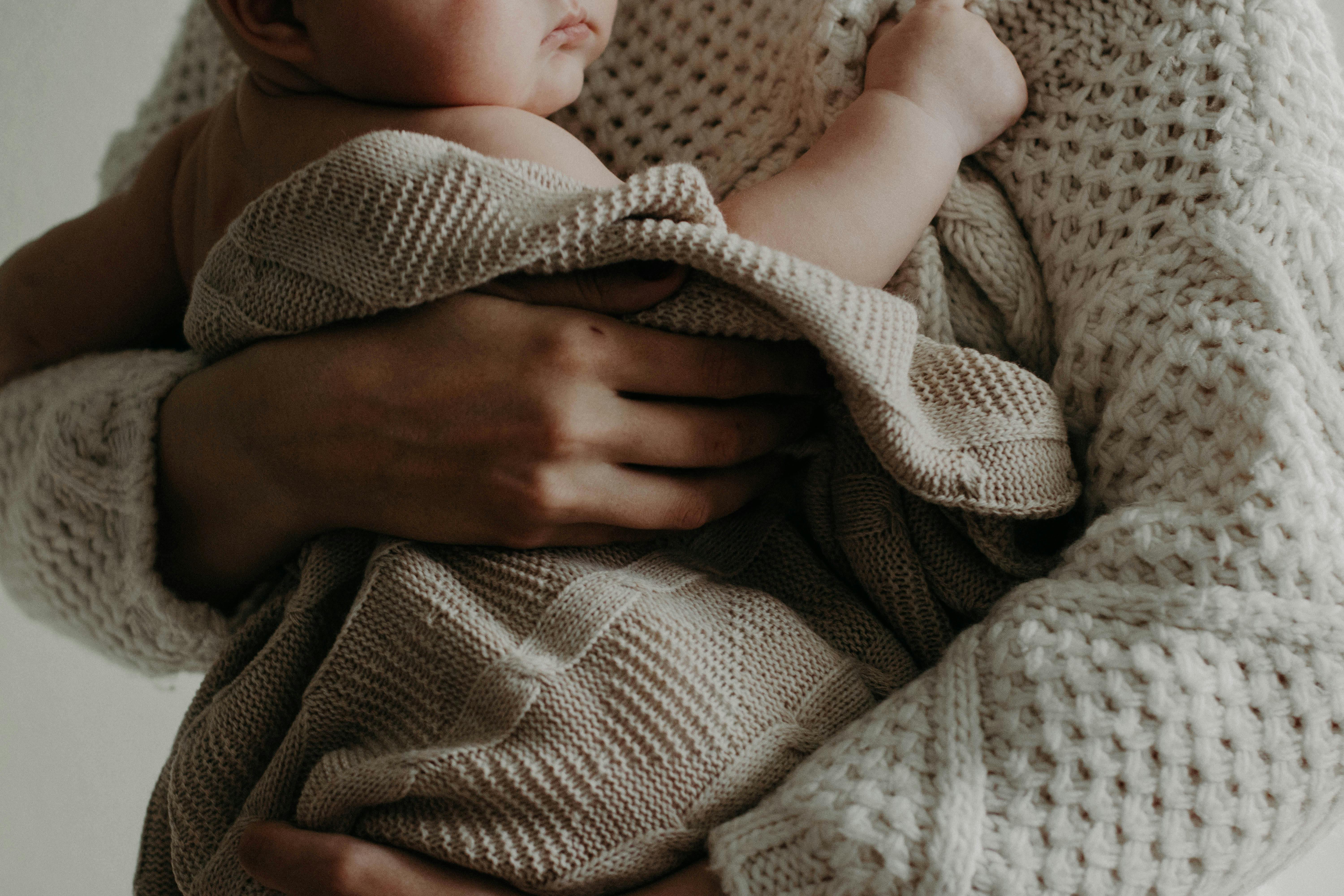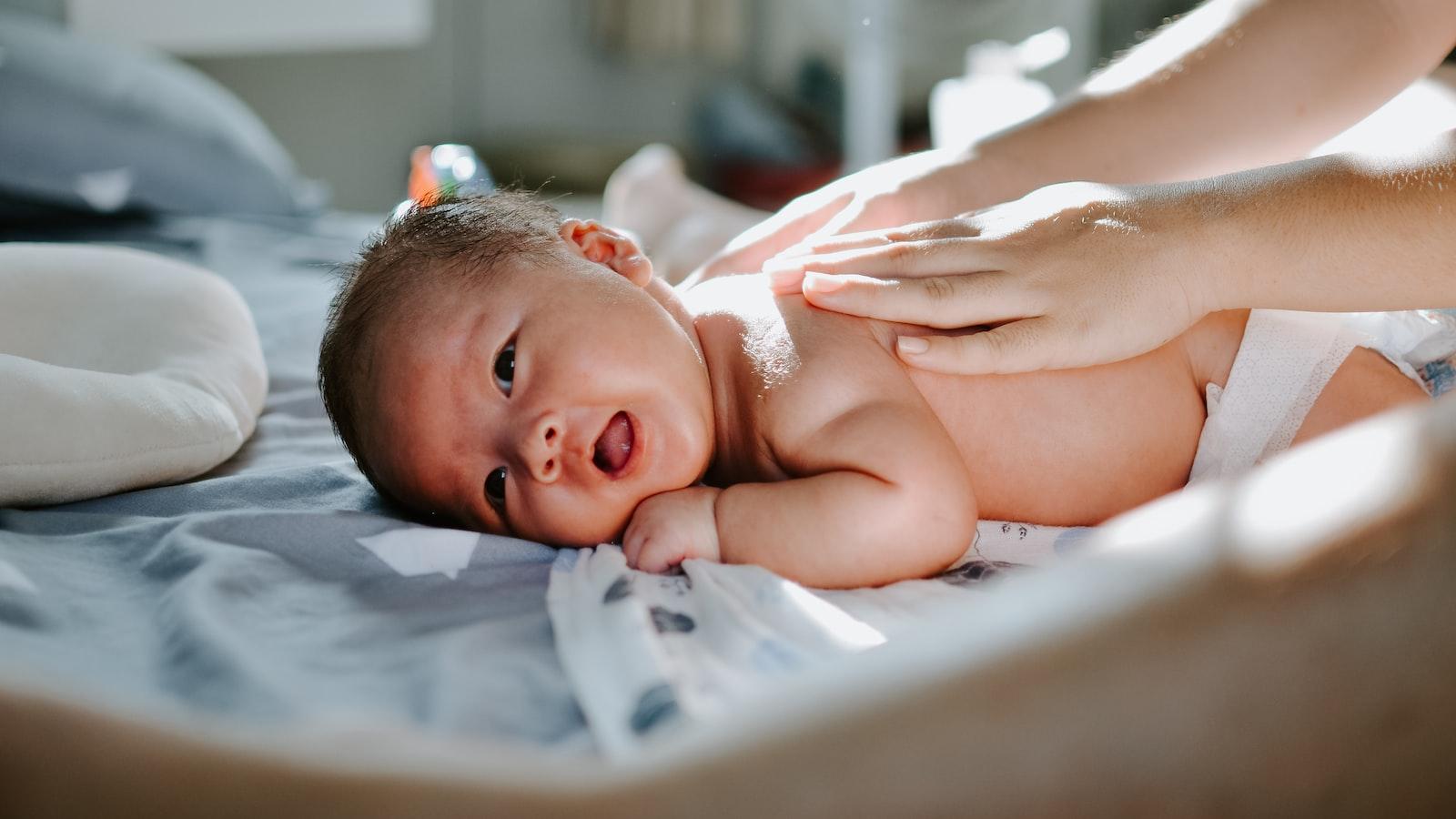When it comes to keeping babies safe and comfortable at night, one of the most important things to consider is how to keep them warm. Keeping a baby warm at night is essential for their health and wellbeing, as it helps to regulate their body temperature and prevent the risk of cold-related illnesses. In this article, we’ll look at some tips on how to keep a baby warm at night, including what type of baby clothing and bedding you should use and how to create a comfortable sleeping environment for your little one.To keep a baby warm at night, dress them in a onesie or sleep sack and layer with a warm blanket. Ensure the baby’s room is at a comfortable temperature of between 16-20 degrees Celsius. If the room is too cold, an extra layer such as a sleep bag may be necessary. Also, make sure that any drafts are blocked by closing windows and doors or using draft stoppers. Lastly, use a hot water bottle to warm the bed before the baby goes to sleep.
The Effect of Temperature on Babies
Babies are particularly sensitive to temperature changes and extreme temperatures can have a significant effect on their health and wellbeing. Exposure to high temperatures can be dangerous for babies, as they are unable to regulate their body temperature as well as adults. In extreme cases, it can lead to heat stroke or other serious health problems. On the other hand, exposure to very low temperatures can also be detrimental to a baby’s health, as it can lead to hypothermia and other problems.
It is therefore important that parents take steps to ensure that their baby’s environment is not too hot or too cold. If the room is too hot, parents should open windows or use fans to cool down the air. If the room is too cold, they should use blankets or extra layers of clothing to keep the baby warm. Parents should also ensure that their baby’s sleeping environment is not too hot or too cold by using appropriate bedding and clothing.
In addition, parents should always be aware of how their baby is responding to changes in temperature. Signs such as sweating, rapid breathing and irritability may indicate that the environment is too hot for the baby. On the other hand, if the baby appears pale and lethargic this may indicate that they are feeling too cold. Whenever possible, parents should try and ensure that their baby’s environment remains comfortable and within a safe temperature range in order to protect them from potential harm due to extreme temperatures.
Regulating Baby’s Temperature
Babies have delicate and sensitive skin, which makes them more prone to temperature changes. To ensure your baby’s comfort and safety, it is important to regulate their temperature. Here are some tips on how to keep your baby at a comfortable temperature:
• Dress your baby appropriately – Depending on the weather, dress your baby in either one layer more or one layer less than what you would wear. Make sure to keep them warm without over-bundling. Choose lightweight materials that are breathable and allow their skin to breathe.
• Monitor the room temperature – Keep the room between 68 and 72 degrees Fahrenheit. If you feel like it’s too hot or cold, adjust the thermostat accordingly.
• Monitor your baby’s body temperature – Keep an eye on your baby’s hands and feet as these are usually the first places to get cold or hot. If they seem too cold or hot, adjust their clothing accordingly.
• Use a fan – Place a fan in the room to circulate air and help regulate the temperature. If it gets too windy in the room, just turn off the fan.
• Use a cool mist humidifier – A cool mist humidifier helps reduce dryness in the air while also regulating your baby’s temperature. Make sure to clean the humidifier regularly with soap and water.
• Give them a lukewarm bath – Giving your baby a lukewarm bath can help regulate their body temperature. Make sure not to make it too hot or too cool for their delicate skin.
By following these tips, you can ensure that your baby stays comfortable at all times by regulating their body temperature.
Check Room Temperature Before Bedtime
Before you get into bed every night, it is important to check the temperature of your bedroom. If the room is too hot or too cold, it can lead to sleep disturbances and can affect the quality of your sleep. A comfortable temperature is essential for a good night’s sleep. To ensure that your bedroom is the optimum temperature for sleeping, you should check the room temperature before you get into bed.
The ideal temperature for sleeping varies from person to person but generally ranges between 60-67 degrees Fahrenheit (15-19 degrees Celsius). You can use a thermometer to measure the exact temperature of your bedroom before you get into bed. This will help you adjust the thermostat or open a window if necessary to ensure that your room has the ideal temperature for sleeping.
If your bedroom is too hot or too cold, it can cause you to wake up frequently during the night. Waking up even a few times during the night can decrease total sleep time and reduce quality of sleep. Poor quality of sleep can impact energy levels, mood, and overall wellbeing during the day. Therefore, it is important to make sure that your bedroom is at an ideal temperature before going to bed each night.
As well as using a thermometer to help measure and adjust room temperatures when necessary, there are other things that you can do in order to keep your bedroom at an optimal temperature for sleeping. For example, keeping windows open slightly in order to allow air flow or using breathable cotton sheets are both great ways to keep cool during hot summer months. Additionally, investing in an electric blanket or extra blankets for colder months can help keep you warm and cozy without making your room too hot or cold.
Checking room temperatures before bedtime ensures that your bedroom has an ideal environment for sleeping which will lead to improved quality of sleep each night. This will benefit both physical and mental health as well as overall wellbeing in the long run.
Dressing the Baby Appropriately for Bedtime
When it comes to bedtime, it’s important to make sure your baby is dressed appropriately. It can be difficult to know what kind of clothes are best for your baby’s sleep. There are several factors to consider when choosing the right clothes for your baby’s bedtime, including comfort, breathability, and safety.
When it comes to comfort, cotton is usually the best material for clothing. Cotton is soft and lightweight, making it a great choice for keeping babies comfortable during sleep. When looking for breathability, look for clothes that are not too tight or restrictive and allow air to circulate around the body. Loose fitting garments like pajama sets and nightgowns can provide comfort and breathability without being too constricting.
Safety is also an important factor when choosing clothes for your baby’s bedtime. Make sure any clothing you choose has no loose buttons or strings that could pose a choking hazard. Also look for items that are flame retardant so they won’t catch fire easily if exposed to heat sources such as candles or lamps. Finally, never put a blanket in the crib with your baby as this can increase the risk of suffocation or strangulation if it gets tangled up in their clothing or bedding.
Overall, when dressing your baby for bedtime it’s important to keep their comfort and safety in mind. Choose soft fabrics like cotton that will keep them cozy while still allowing air to flow around their body. Avoid anything with strings or buttons that could present a choking hazard and never put a blanket in the crib with them while they sleep. With these tips in mind, you’ll be sure to pick out the perfect outfit for your little one’s slumber time!

Using Layers of Blankets and Clothes
One of the most effective ways to stay warm around the home is to use layers of blankets and clothes. Layering different types of clothing and bedding can help trap heat close to your body, preventing it from escaping and keeping you warmer for longer. A good layering strategy should start with a base layer such as thermal underwear or a thin woolen jumper, followed by a few additional layers on top. Depending on the weather conditions, these could include a thicker woolen jumper, a down-filled jacket, or even quilted blankets.
When using blankets and clothes to stay warm, it is important to make sure that each layer fits snugly against your body. This helps to ensure that no heat escapes and keeps you comfortable throughout the day. It is also important to adjust your layers depending on the temperature outside; for example, adding more layers when temperatures drop or removing them when temperatures rise.
Finally, if you are feeling particularly cold during cold winter nights it is important to make sure that all windows are closed and curtains are drawn tightly shut. This helps trap heat inside your home, making it easier for your blankets and clothes to keep you warm.
Avoid Overheating Babies in Bed
It is important to ensure that babies stay cool and comfortable while sleeping, as overheating can be dangerous and can increase the risk of Sudden Infant Death Syndrome (SIDS). To avoid overheating, parents should dress babies in light layers and check to make sure their bedroom temperature is between 68°F – 72°F. It is also important for parents not to let their baby get too hot when they are sleeping. Avoid using extra blankets or bedding, as this can cause the baby to become too warm. Instead, use a sleep sack or swaddle to provide a safe and comfortable sleep environment for your baby. Additionally, avoid placing your baby on a soft surface such as a pillow or mattress with thick padding, as this could also contribute to overheating.
Parents should also keep in mind that it is not recommended for babies to sleep in direct contact with adults or other animals due to the risk of overheating and SIDS. It is best to place the baby on their back on a firm mattress in their own crib or bassinet. If parents want to share a bed with their baby for comfort or convenience, it is important that they take steps to ensure the baby does not become too hot. This includes avoiding heavy blankets and layers of clothing, making sure there are no gaps between the mattress and headboard where the baby could become trapped, and ensuring there is no space between an adult and the edge of the bed where the infant could roll over.
By following these guidelines, parents can help ensure that their baby stays safe and cool while they sleep. Taking steps to avoid overheating will help minimize the risk of SIDS and other health hazards associated with an overly warm environment during sleep time.
Monitor Baby’s Skin Temperature During Sleep
Parents have always struggled to keep their babies comfortable and safe during sleep. One of the most important factors in this regard is ensuring that their baby’s skin temperature is regulated. The skin temperature of a baby can fluctuate easily, which can lead to a number of health issues. To ensure the safety and comfort of a baby during sleep, it is important for parents to monitor their baby’s skin temperature.
This can be done in several ways. One option is to use a thermometer specifically designed for monitoring baby’s skin temperature during sleep. These thermometers are designed to accurately measure the skin temperature of a baby, as well as alert parents when the skin temperature rises or falls too much. This allows parents to take corrective actions quickly and prevent any potential health issues due to an unregulated body temperature.
Another option is to use smart fabric-based sensors that are designed for monitoring the skin temperature of babies during sleep. These sensors are embedded in fabric materials and are designed to detect variations in the body temperature of a baby and alert parents when necessary. This helps parents ensure that their babies are comfortable throughout their sleep, without having to constantly check on them with a thermometer or other device.
Overall, monitoring baby’s skin temperature during sleep is an essential part of keeping them safe and comfortable at night. By using either specialized thermometers or fabric-based sensors, parents can easily monitor their baby’s skin temperature and take corrective action quickly when necessary.

Conclusion
Keeping a baby warm at night is important for their health and comfort. It is essential to make sure that their bedroom is properly heated, the clothing they wear is adequate for the temperature, and that there are no drafts in the room. Additionally, layers of bedding can provide extra warmth and security for a baby, as long as it is not too bulky. Finally, monitoring the temperature of the room throughout the night can help ensure that a baby does not become too hot or too cold. By following these tips, parents can be sure their baby will have a comfortable and safe night’s sleep.
With proper preparation, parents can ensure that their baby will be cozy and warm at night. Taking small steps to make sure a baby is comfortable and safe while sleeping will promote healthy growth and development in children and give parents peace of mind.




